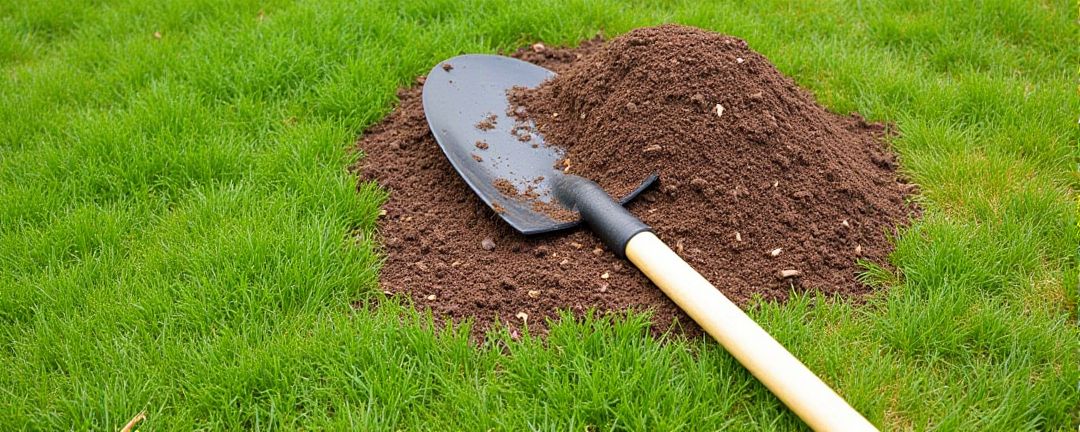
How to Prepare Your Lawn for Spring Growth
As winter transitions into spring, your lawn needs careful attention to recover from the colder months and prepare for the vibrant growth of the season ahead. Proper spring lawn preparation sets the stage for a healthy, green yard that thrives throughout the year. Follow this comprehensive guide to ensure your lawn is ready to make a stunning comeback.
Assess Your Lawn’s Current Condition
Before jumping into action, evaluate your lawn to understand its current state. Look for:
- Thatch buildup: A layer of dead grass and debris that can prevent water and nutrients from reaching the soil.
- Bare patches: Areas where grass has thinned or died off.
- Weeds: Early signs of weeds that could take over if left unchecked.
- Soil compaction: Soil that feels hard and resists water penetration may need aeration.
This assessment helps identify specific issues that need attention, ensuring targeted care for your lawn.
Clean Up Your Lawn
Begin by clearing debris such as leaves, twigs, and dead grass from your yard. Use a rake to remove the remnants of winter and allow the soil to breathe. This cleanup helps prevent mold growth and provides a clean slate for further treatments.
Aerate the Soil
Aerating your lawn improves soil health by loosening compacted areas and increasing airflow to the grassroots. This process ensures better water and nutrient absorption, promoting healthy growth. If your lawn is prone to heavy foot traffic or has clay soil, aeration is especially beneficial.
How to Aerate:
- Use a core aerator or a spike aerator.
- Focus on areas with visible compaction or poor drainage.
- Perform aeration when the soil is moist but not overly wet.
Test and Amend the Soil
Healthy soil is the foundation of a thriving lawn. Conduct a soil test to determine its pH level and nutrient content. Ideal lawn soil has a pH between 6.0 and 7.0.
Steps to Improve Soil:
- Add lime to raise soil pH or sulfur to lower it.
- Use organic compost or a balanced fertilizer to replenish nutrients.
- Spread a layer of topsoil if needed to improve structure and fertility.
Oversee Bare Patches
Bare patches can be unsightly and invite weeds. Overseeding fills in these areas, creating a dense lawn that resists weed growth.
How to Overseed:
- Choose a grass seed blend suitable for your region.
- Loosen the soil in bare spots with a rake.
- Spread seeds evenly and cover lightly with soil or straw.
- Water consistently to encourage germination.
Control Weeds Early
Spring is the ideal time to get ahead of weeds before they spread. Opt for natural or eco-friendly weed control methods to avoid harsh chemicals.
Weed Control Tips:
- Hand-pull weeds, ensuring the roots are removed.
- Apply corn gluten meal as a natural pre-emergent herbicide.
- Maintain a thick, healthy lawn to prevent weed growth.
Fertilize for a Nutrient Boost
Spring fertilization gives your lawn the nutrients it needs to kickstart growth. Choose a slow-release fertilizer tailored to your grass type.
When and How to Fertilize:
- Apply fertilizer after the last frost and when the grass begins to grow.
- Water the lawn lightly after application to activate the nutrients.
- Follow the product’s instructions to avoid over-fertilizing, which can harm your lawn.
Sharpen and Tune Up Your Mower
A well-maintained mower is essential for clean, precise cuts that promote healthy grass. Dull blades can tear grass, making it more susceptible to disease.
Mower Maintenance Tips:
- Sharpen the blades before the mowing season starts.
- Change the oil and replace the air filter.
- Check the spark plug and clean or replace it if necessary.
Establish a Mowing Routine
Spring mowing practices play a critical role in your lawn’s health.
Mowing Tips:
- Set your mower blade to a higher setting for the first few cuts.
- Avoid cutting more than one-third of the grass height at a time.
- Mow when the grass is dry to prevent clumping.
Water Wisely
Spring rainfall often provides sufficient moisture, but supplemental watering may be necessary during dry spells.
Watering Tips:
- Water deeply and infrequently to encourage deep root growth.
- Water in the early morning to minimize evaporation and fungal risks.
- Use a sprinkler system or hose with a timer for consistent coverage.
Mulch Flowerbeds and Borders
Enhance the overall appearance of your lawn by refreshing mulch in flowerbeds and borders. Mulch helps retain moisture, suppress weeds, and regulate soil temperature.
How to Mulch Effectively:
- Apply a 2-3 inch layer of mulch around plants, avoiding direct contact with stems.
- Use organic mulch, such as bark or wood chips, for added nutrients as it breaks down.
Plan for Preventative Pest Control
Spring is also a time when lawn pests become active. Stay ahead by implementing preventative measures.
Pest Control Tips:
- Introduce beneficial nematodes to control soil-dwelling pests.
- Keep your lawn healthy to discourage pests naturally.
- Monitor for early signs of pest activity, such as dead spots or burrows.
Final Touches for a Stunning Spring Lawn
To complete your spring lawn preparation:
- Edge your lawn for crisp, defined borders.
- Add decorative elements like flowerpots or garden ornaments.
- Consider hiring professional lawn care services for tasks you’re unable to manage yourself.
Benefits of Professional Lawn Care:
- Expertise in seasonal treatments.
- Access to specialized equipment.
- Time savings and peace of mind.
By following these steps, your lawn will be primed for robust growth and lush greenery all spring and beyond. Whether you’re tackling lawn care on your own or seeking expert help, the results will speak for themselves. Start your preparation today and enjoy a beautiful, healthy lawn throughout the year!








